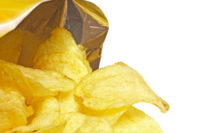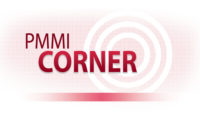PMMI Corner
Growing Flexible Packaging Demand
Consumer demands for environmentally friendly, convenient and cost-effective packaging continue to drive flexible packaging market growth.

Advances in film technology and new printing options are also prime contributors to this expansion. Environmentally conscious consumers are looking for packaging that uses fewer resources and less energy than other forms of packaging. Flexible packaging minimizes transport costs between the converter, packager/filler, retailer and end user. It not only takes up less space when empty than rigid packaging, but can also be formed on the spot from roll materials at the filling location, thereby minimizing transportation of ready-formed empty packaging. In addition to significant reductions in packaging costs, materials use and transport costs, flexible packaging provides certain performance advantages over rigid packaging.
As environmental pressures and high polymer prices drives the demand for thinner films, downgauging continues to be a key trend in flexible plastic packaging even though many of these films are reaching the limits of this trend. As downgauging reaches its limits, high-performance films are increasing in importance. These high-performance film structures provide advantages such as less permeability and increased shelf life, enhancing flavors in food products.
Easily designable for many types of products and all levels of moisture and oxygen barrier needs, flexible packaging can be both clear or opaque. For the most part, barrier flexible packaging for retail products is a lamination of several thicknesses of plastic, paper or foil. Thus, one or more of the plies provide the level of barrier necessary.
Flexible packaging is also replacing glass and metal, particularly retorted and hot-filled products, as substantial improvements are made to barrier properties of plastic films and particularly clear plastic films. One of the advantages is the ability of the brand owner to ‘dial in’ the barrier-based on product and shelf life requirements. With glass and metal packaging, very high barriers are incorporated whether they are needed or not.
For example, packaging refrigerated milk in a glass container is completely unnecessary to maintain product shelf life. Milk oxidizes very slowly at refrigerated temperatures and therefore, does not require a barrier package at all. The other extreme would be wine, which—even at refrigerated temperatures—reacts with oxygen quickly and is well-suited for a glass container.
As more and more consumers lead increasingly busy and hectic lifestyles, they do not have the time to cook meals from scratch, preferring to opt for convenient mealtime solutions instead. This puts ready meals in new flexible packaging formats in a prime position to take advantage of current social and economic trends.
As flexible packaging has grown, the processes for graphic decoration and production has become more sophisticated, more efficient and infinitely more attractive to consumers. Flexographic print capabilities have expanded and become steadily more colorful and detailed, with flexo techniques steadily improving, including high definition capabilities in recent years.
Packaging industry professionals can find the latest flexible packaging innovations at PACK EXPO International 2018 (Oct. 14-17, 2018; McCormick Place, Chicago). More than 50,000 attendees will gain insight on the newest materials and container solutions from over 2,500 exhibitors. New this year, The PACKage Printing Pavilion will offer an opportunity to see cutting-edge labeling innovations and techniques, while show features like The Containers and Materials Pavilion and The Reusable Packaging Pavilion will display advances in flexible, resealable and sustainable packaging.
To register and learn more, visit packexpointernational.com.
Looking for a reprint of this article?
From high-res PDFs to custom plaques, order your copy today!





